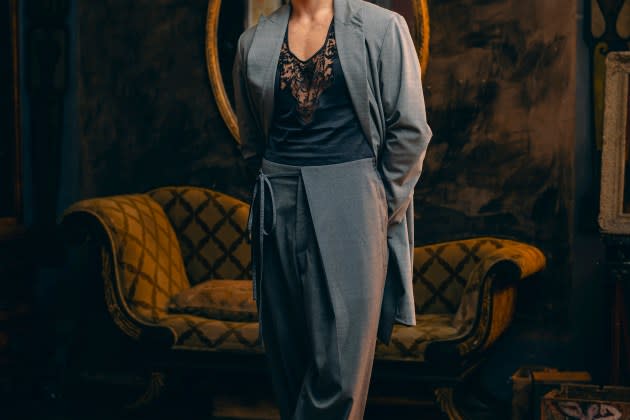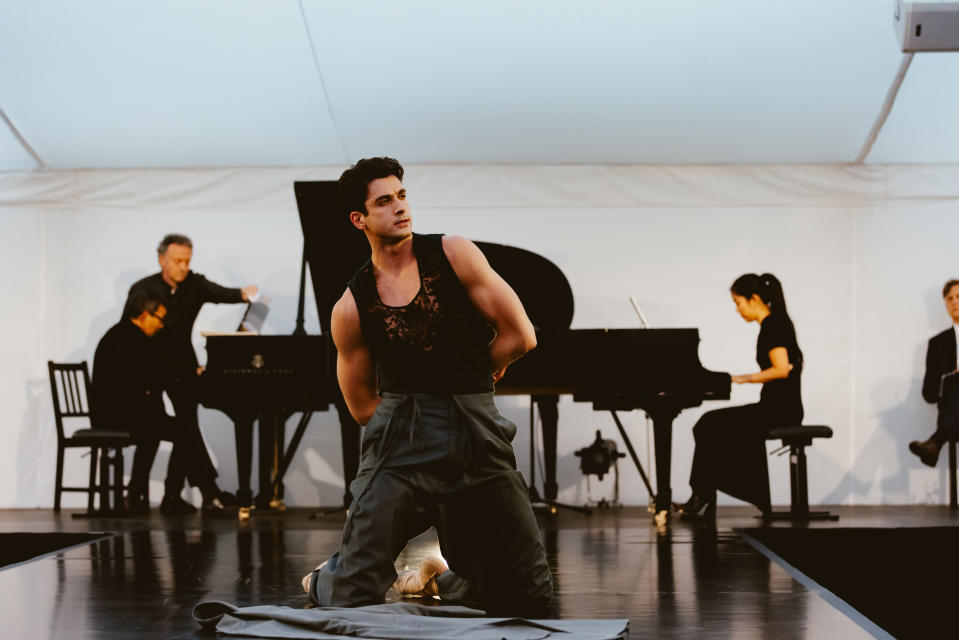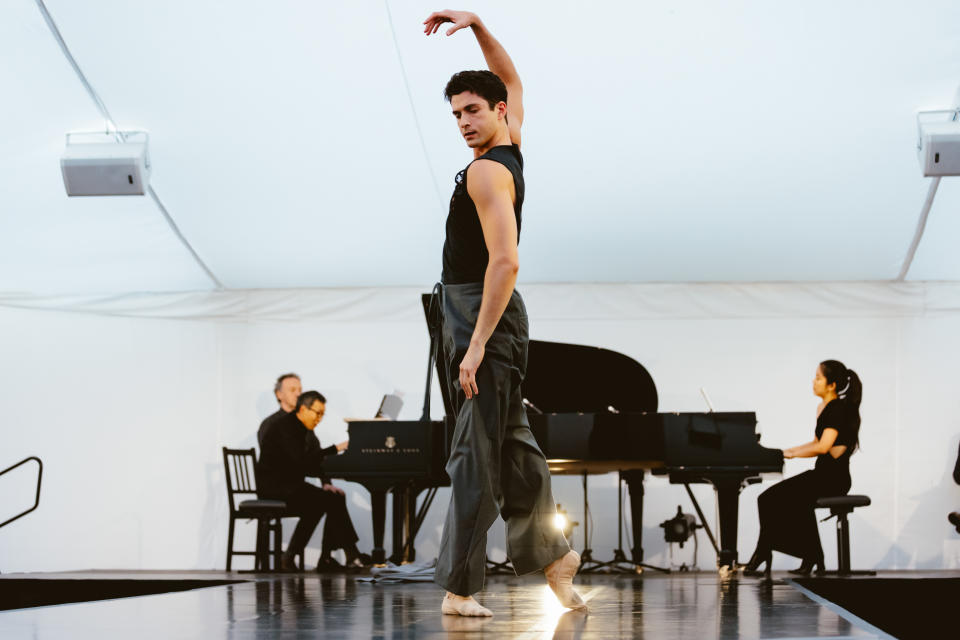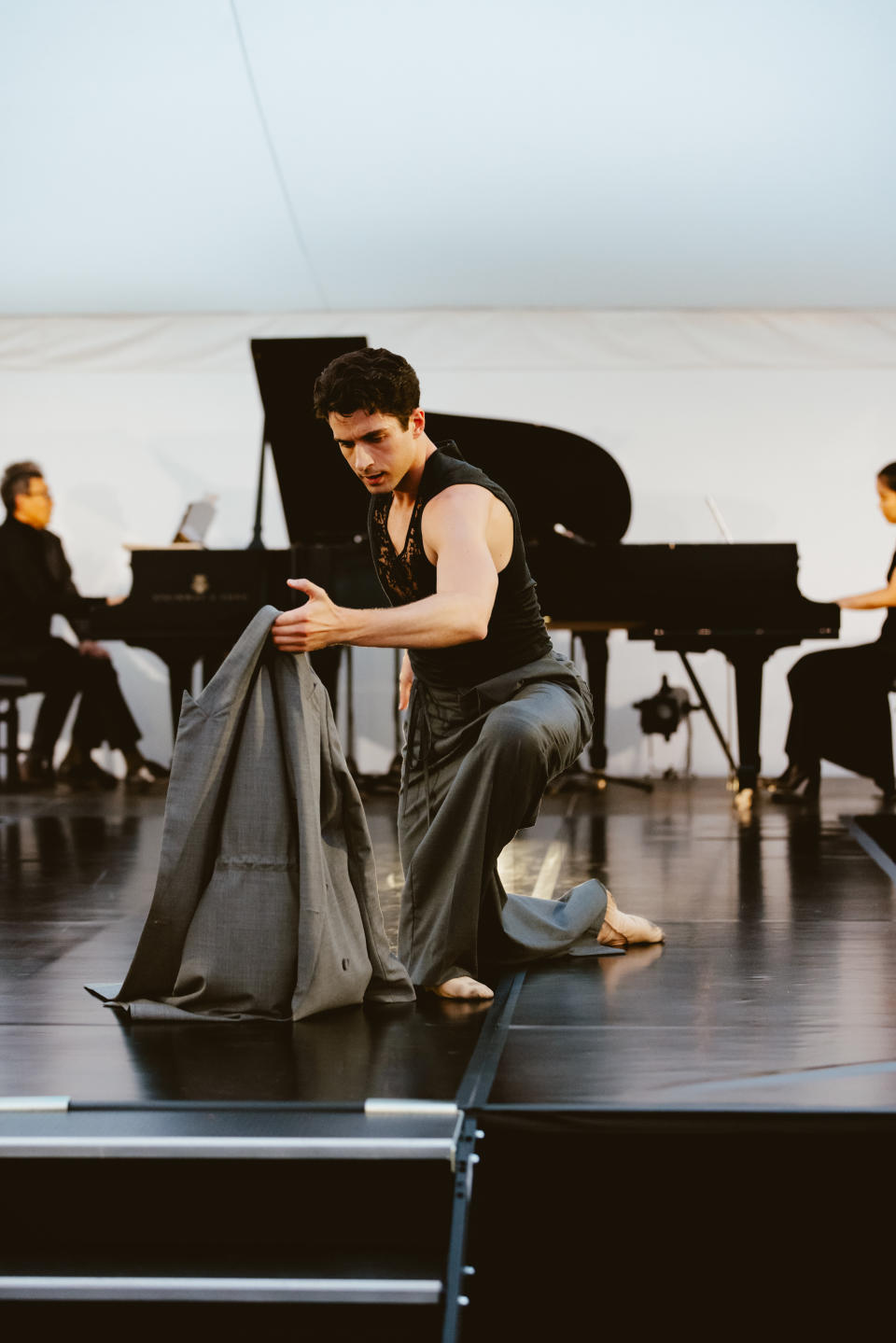Dior’s Kim Jones Designed Costumes for Ballet That Premiered at the Charleston Festival

LONDON — Kim Jones calls Charleston Lewes, an hour’s commute from London, one of his big passions.
“I visited [Charleston] for the first time when I was 14 years old. As I was a creative child and had a great interest in authors, I was immediately fascinated by this place, which was obviously like no other,” the designer said in an interview.
More from WWD
Opera Singer Pretty Yende Talks Body Positivity, Acting Ambitions and Healing Through Music
How Max Richter's Stirring Compositions Became the Soundtrack to the Runways
The Dior Men’s artistic director designed costumes for a new dance commission, “The Afternoon of a Faun” by Russell Maliphant, that premiered at the Charleston Festival.
The performance is a reimagination of Vaslav Nijinsky’s iconic ballet numbers “The Rite of Spring” and “The Afternoon of a Faun.”

Royal Ballet principal dancer Reece Clarke wore the bespoke outfit designed by Jones and Dior Men for the nine-minute solo dance performance.
“I think it was important to design something comfortable but still very aesthetic, an outfit that can follow each movement of the dancer — something fluid,” said the designer of the wide-leg gray trousers paired with a lace and lightweight fabric vest and light gray coat that he designed.
Jones grew up with a ballet influence in his life because of his uncle, Colin Jones, a ballet dancer turned photographer.
The designer’s fall 2024 men’s collection was informed by the Soviet ballet dancer and choreographer, Rudolf Nureyev.

“I have a lot of memories of [ballet] as a kid because my uncle documented amazing things in his work that I see in books and magazines. He was a true friend to Nureyev, I sometimes visited his darkroom where you would see the color and beauty of something emerge from subjects that were not necessarily beautiful,” said Jones, crediting his experience for forming his personal aesthetic.
The collection translated the dancer’s personal collection of caftans, kimonos and precious shawls into easy light, wearable pieces with elements of couture weaved in via the intricately embroidered kimonos. One of the kimonos was directly based on the dancer’s antique kimono he owned and wore.
Nureyev’s Paris apartment on 23 Quai Voltaire was filled with treasures, including textiles and clothing.
The collection was also an ode to the French house’s founder, Christian Dior.
“I had been thinking about the relationship between the ballet dancer Margot Fonteyn and Mr. Dior,” Jones said.
The English ballerina discovered Dior on a trip to Paris in 1948. Nureyev was her most famous dance partner.

“I admire the dedication necessary for ballet, that striving for beauty that is built on toughness. Ballet and gymnastics seem to have this combination above all else. It’s discipline and beauty. I think this is something shared with fashion at its highest level,” Jones said.
The collaboration between Fonteyn and Nureyev hits home for the designer, who has made partnering with other creatives a necessity for his work. It’s partly why he loves the Bloomsbury Group, whose lives intertwined, personally and professionally. He has collected many first edition books and other memorabilia related to the group.
“When I first went to the Charleston Farmhouse Museum, I felt their [the Bloomsbury Group] presence. I imagined Quentin Bell walking down the street. The impact of it never left me after,” Jones explained.
“For me, collaborations have always been something positive. A lot of people are against collaborations, but I think this kind of thinking is very narrow-minded, people want to see new stuff and you can’t do new stuff if you don’t work with new people,” he added.
When he calls a fellow creative for a collaboration, he’s not calling them for their work, but rather for their “innovative vision,” where they contribute more as a designer than artist, Jones said.
Last year Dior revealed it would be supporting a major exhibition, “Bring No Clothes: Bloomsbury and Fashion,” on the famous cultural collective at the gallery space Charleston Lewes. The exhibit was curated by journalist Charlie Porter to coincide with the release of his book, “Bring No Clothes: Bloomsbury and the Philosophy of Fashion.”
The exhibition included pieces from Jones’ men’s spring 2023 collection for Dior that took its cues from the group, such as a transparent tank top featuring two figures kissing, taken from one of Duncan Grant’s illustrations he made on a fan; a knit sweater featuring the same print as a fire curtain that Grant made for Sadlers Wells Theatre in 1930, and a pair of running shorts stamped with a landscape painting of Tangier, Morocco, from 1975.
Best of WWD

 Yahoo Lifestyle
Yahoo Lifestyle 
